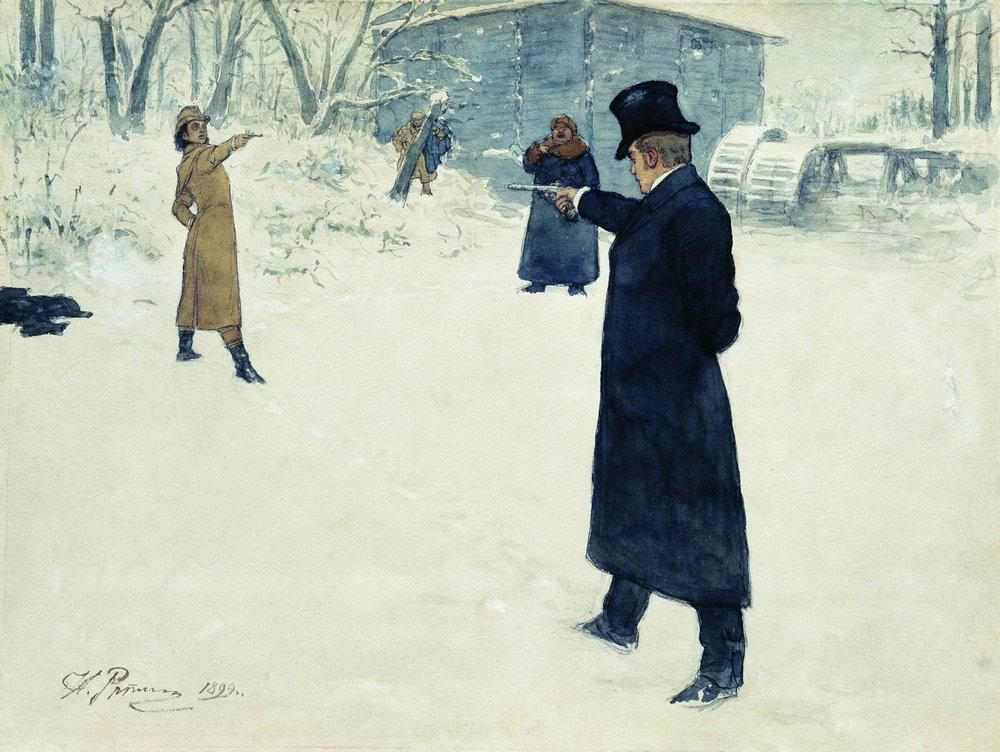log in
Enter site
Login to use Arthive functionality to the maximum
Literary Scenes
7,867 artworks, 966 artists
In the visual arts, the literary scene was the result of a combination of two creative directions. Literature describes the human perception of reality using words, while painting and sculpture reflect reality with the help of color and form. A scene from a literary work determines the content and aesthetic atmosphere of the picture, and the artist consciously refuses creative freedom in choosing a subject. The painter’s task is to create a “materialized narrative” based on the written sources: from ballads and ancient myths to science fiction novels of the 20th century.
Painting and literature are interconnected by the invisible threads, and they complement each other from the moment of their occurrence. In the era of antiquity, Aristotle compared literature with painting and urged poets to become “beautiful portrait painters”, and artists to fill their colors with emotions and images of poetry. Artists embodied scenes from the works by Homer, Ovid, Virgil, revived the characters of the Bible, particularly the Gospel, immersed the viewer in the life and dramas of the heroes of Shakespeare and Cervantes. William Blake (1757—1827) combined the talent of a great poet and artist of the Romantic era. The invention of typography simplified the book distribution, and images became their constant visual companions.
Literary scenes are inextricably linked with the plot and the genre of storytelling; therefore, they have several levels of artistic hierarchy. The images of the “high genre” represent dramas and tragedies, songs and odes, mythological stories and biblical stories. The paintings of the “low genre” entertain viewers with scenes from comedies, fables, everyday descriptions and satirical texts. Artists themselves choose the style and technique of their artworks, fill the story with subjective perception, their personal attitude to the subjects of a work and thereby enrich the visual, emotional and semantic perception of the literary work.
Famous literary scenes in the visual arts:
“The Night of Enitharmon’s Joy (Hecate)” 1795, “The Spiritual Form of Pitt Guiding Behemoth” 1805 William Blake; “King Cophetua and the Beggar Maid” 1884, “The Last Sleep of Arthur in Avalon” 1898 by Edward Coley Burne-Jones; “Miranda and the Storm” 1916, “Tristan and Isolde with the Potion” 1916 John William Waterhouse.
Famous artists: Dante Gabriel Rossetti, Edward Coley Burne-Jones, William Blake, John Everett Millet, John William Waterhouse, Victor Vasnetsov.
Painting and literature are interconnected by the invisible threads, and they complement each other from the moment of their occurrence. In the era of antiquity, Aristotle compared literature with painting and urged poets to become “beautiful portrait painters”, and artists to fill their colors with emotions and images of poetry. Artists embodied scenes from the works by Homer, Ovid, Virgil, revived the characters of the Bible, particularly the Gospel, immersed the viewer in the life and dramas of the heroes of Shakespeare and Cervantes. William Blake (1757—1827) combined the talent of a great poet and artist of the Romantic era. The invention of typography simplified the book distribution, and images became their constant visual companions.
Literary scenes are inextricably linked with the plot and the genre of storytelling; therefore, they have several levels of artistic hierarchy. The images of the “high genre” represent dramas and tragedies, songs and odes, mythological stories and biblical stories. The paintings of the “low genre” entertain viewers with scenes from comedies, fables, everyday descriptions and satirical texts. Artists themselves choose the style and technique of their artworks, fill the story with subjective perception, their personal attitude to the subjects of a work and thereby enrich the visual, emotional and semantic perception of the literary work.
Famous literary scenes in the visual arts:
“The Night of Enitharmon’s Joy (Hecate)” 1795, “The Spiritual Form of Pitt Guiding Behemoth” 1805 William Blake; “King Cophetua and the Beggar Maid” 1884, “The Last Sleep of Arthur in Avalon” 1898 by Edward Coley Burne-Jones; “Miranda and the Storm” 1916, “Tristan and Isolde with the Potion” 1916 John William Waterhouse.
Famous artists: Dante Gabriel Rossetti, Edward Coley Burne-Jones, William Blake, John Everett Millet, John William Waterhouse, Victor Vasnetsov.
Read more
Feed

